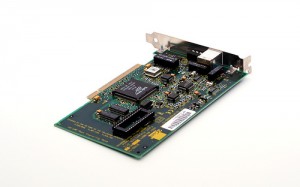This article is written by Lakshmanan G
Ifconfig command is used to configure network interfaces. ifconfig stands for interface configurator. Ifconfig is widely used to initialize the network interface and to enable or disable the interfaces.
In this article, let us review 7 common usages of ifconfig command.
1. View Network Settings of an Ethernet Adapter
Ifconfig, when invoked with no arguments will display all the details of currently active interfaces. If you give the interface name as an argument, the details of that specific interface will be displayed.
# ifconfig eth0 eth0 Link encap:Ethernet HWaddr 00:2D:32:3E:39:3B inet addr:192.168.2.2 Bcast:192.168.2.255 Mask:255.255.255.0 inet6 addr: fe80::21d:92ff:fede:499b/64 Scope:Link UP BROADCAST RUNNING MULTICAST MTU:1500 Metric:1 RX packets:977839669 errors:0 dropped:1990 overruns:0 frame:0 TX packets:1116825094 errors:8 dropped:0 overruns:0 carrier:0 collisions:0 txqueuelen:1000 RX bytes:2694625909 (2.5 GiB) TX bytes:4106931617 (3.8 GiB) Interrupt:185 Base address:0xdc00
2. Display Details of All interfaces Including Disabled Interfaces
# ifconfig -a
3. Disable an Interface
# ifconfig eth0 down
4. Enable an Interface
# ifconfig eth0 up
5. Assign ip-address to an Interface
Assign 192.168.2.2 as the IP address for the interface eth0.
# ifconfig eth0 192.168.2.2
Change Subnet mask of the interface eth0.
# ifconfig eth0 netmask 255.255.255.0
Change Broadcast address of the interface eth0.
# ifconfig eth0 broadcast 192.168.2.255
Assign ip-address, netmask and broadcast at the same time to interface eht0.
# ifconfig eth0 192.168.2.2 netmask 255.255.255.0 broadcast 192.168.2.255
6. Change MTU
This will change the Maximum transmission unit (MTU) to XX. MTU is the maximum number of octets the interface is able to handle in one transaction. For Ethernet the Maximum transmission unit by default is 1500.
# ifconfig eth0 mtu XX
7. Promiscuous mode
By default when a network card receives a packet, it checks whether the packet belongs to itself. If not, the interface card normally drops the packet. But in promiscuous mode, the card doesn’t drop the packet. Instead, it will accept all the packets which flows through the network card.
Superuser privilege is required to set an interface in promiscuous mode. Most network monitor tools use the promiscuous mode to capture the packets and to analyze the network traffic.
Following will put the interface in promiscuous mode.
# ifconfig eth0 promisc
Following will put the interface in normal mode.
# ifconfig eth0 -promisc
This article was written by Lakshmanan G. He is working in bk Systems (p) Ltd, and interested in contributing to the open source. The Geek Stuff welcomes your tips and guest articles.







 My name is Ramesh Natarajan. I will be posting instruction guides, how-to, troubleshooting tips and tricks on Linux, database, hardware, security and web. My focus is to write articles that will either teach you or help you resolve a problem. Read more about
My name is Ramesh Natarajan. I will be posting instruction guides, how-to, troubleshooting tips and tricks on Linux, database, hardware, security and web. My focus is to write articles that will either teach you or help you resolve a problem. Read more about
Comments on this entry are closed.
An excellent tutorial. Good explanations.
hi, u r helping a lot for the linux system administrators. thanks.
Thank you for the very helpful information. It was very useful in getting the IP address changed on my Asterisk server without having to reload the system. Thanks again
Hi ,
Can you tell me how can interact with System Hardware on Ubuntu using Java.Please give me any solutions.
Thanks
vaibhav